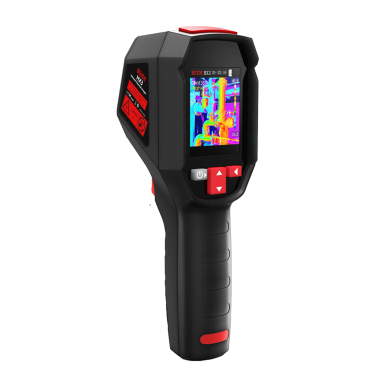
# Infrared Thermometer: Accurate and Non-Contact Temperature Measurement
## Introduction to Infrared Thermometers
Infrared thermometers, also known as non-contact thermometers or laser thermometers, have revolutionized temperature measurement in various industries. These devices measure temperature from a distance by detecting the infrared energy emitted by objects, making them ideal for situations where traditional contact thermometers are impractical or unsafe.
## How Infrared Thermometers Work
The Science Behind Infrared Temperature Measurement
Infrared thermometers operate on the principle that all objects emit infrared energy as a function of their temperature. The device contains a lens that focuses the infrared energy onto a detector, which converts the energy into an electrical signal. This signal is then processed and displayed as a temperature reading.
Key components of an infrared thermometer include:
- Optical system (lens)
- Infrared detector
- Signal processing unit
- Display screen
## Advantages of Infrared Thermometers
Why Choose Non-Contact Temperature Measurement?
Infrared thermometers offer numerous benefits compared to traditional contact thermometers:
- Non-contact measurement: Reduces cross-contamination risks in medical and food applications
- Fast readings: Provides temperature measurements in seconds
- Safe for hazardous situations: Allows measurement of extremely hot, moving, or electrically charged surfaces
- Versatility: Can measure temperature of objects that are difficult to reach
- Durability: No moving parts that can wear out from repeated use
## Applications of Infrared Thermometers
Where Are Infrared Thermometers Used?
The versatility of infrared thermometers makes them valuable tools in numerous fields:
Medical Applications
Infrared thermometers are widely used in healthcare settings for measuring body temperature without physical contact, reducing infection risks.
Industrial Maintenance
Technicians use infrared thermometers to monitor equipment temperature, detect overheating components, and prevent machinery failures.
Food Safety
Restaurants and food processing plants rely on infrared thermometers to ensure proper food temperatures without contaminating the product.
HVAC Systems
HVAC professionals use these devices to check air duct temperatures, identify insulation problems, and optimize system performance.
## Choosing the Right Infrared Thermometer
Key Factors to Consider
When selecting an infrared thermometer, consider these important specifications:
| Feature | Consideration |
|---|---|
| Temperature Range | Ensure it covers your expected measurement needs |
| Distance-to-Spot Ratio | Determines how close you need to be for accurate readings |
| Emissivity Settings | Important for measuring different surface types |
| Response Time | Faster is better for moving objects |
| Accuracy | ±1°C or better is typical for quality devices |
## Proper Use of Infrared Thermometers
Keyword: infrared thermometer